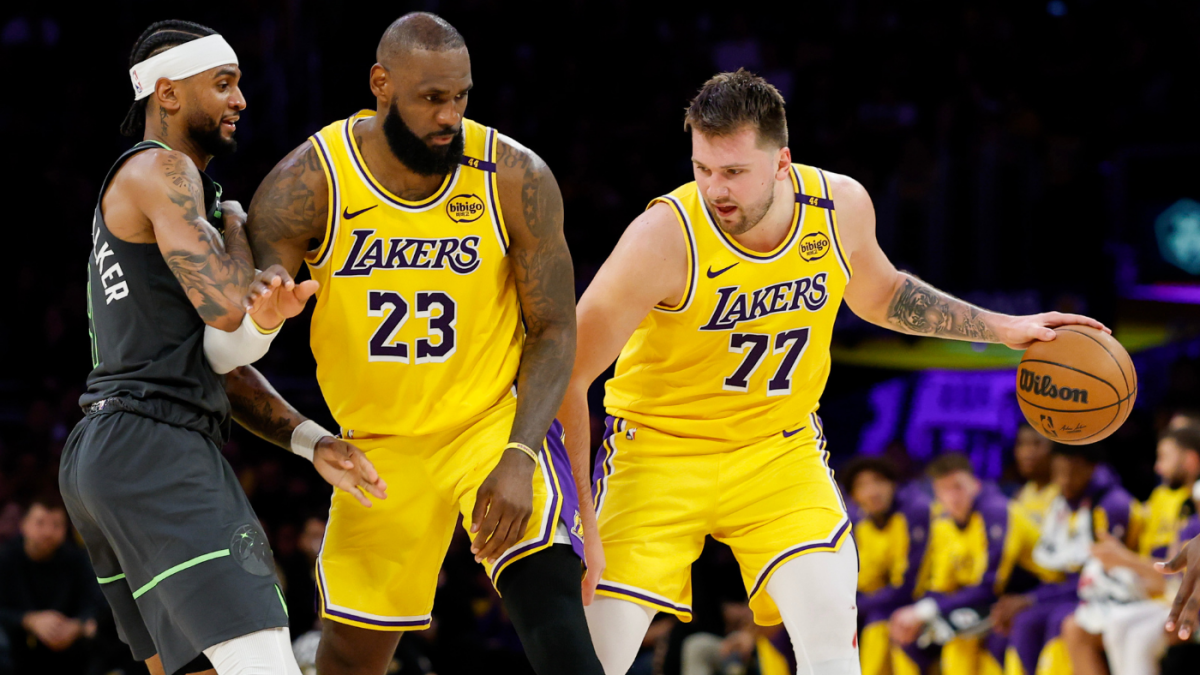“`markdown
A Clash of Titans: Dissecting the Lakers-Timberwolves Playoff Showdown
The 2025 NBA playoffs have delivered a masterclass in high-stakes basketball, with the Minnesota Timberwolves standing one victory away from eliminating the star-studded Los Angeles Lakers. This 3-1 series advantage reveals more than just temporary standings—it exposes fundamental truths about roster construction, defensive philosophy, and the evolution of NBA greatness.
The Anatomy of Minnesota’s Surge
Defensive Chokehold
Minnesota has transformed into a defensive hydra, with multiple players rotating seamlessly to smother Lakers’ scoring opportunities. Their scheme specifically targets transition opportunities—the Lakers average just 8.2 fast break points this series compared to their regular season 14.7. The Timberwolves’ length (three starters standing 6’9″ or taller) creates passing lane nightmares, evidenced by their 9.3 steals per game.
Strategic Tempo Control
By slowing the game to a 94.2 pace (regular season: 98.1), Minnesota neutralizes the Lakers’ transition game. Their half-court execution features clever misdirection plays—the backdoor cut to Anthony Edwards has produced 1.32 points per possession, his most efficient play type in the series.
Los Angeles’ Structural Flaws Exposed
The Supporting Cast Conundrum
While LeBron James and Luka Dončić combine for 61.4 points per game, the rest of the roster shoots just 39.2% from the field. The lack of reliable tertiary scoring becomes glaring in clutch moments—Lakers role players are 5-of-21 (23.8%) on wide-open threes in the final five minutes of games.
Defensive Rotations in Crisis
Minnesota exploits LA’s slow defensive rotations with precise weak-side actions. The Lakers allow 1.18 points per possession on corner threes this series (league average: 1.12), with opponents shooting 42.6% from those zones. This systemic breakdown stems from overhelping on drives—a fatal flaw against Minnesota’s elite ball movement.
Individual Brilliance vs. Collective Strength
LeBron’s Last Stand?
The 40-year-old phenom continues defying time with 27/12/8 averages, but his -6.3 net rating reveals defensive vulnerabilities. Minnesota targets him in pick-and-rolls, generating 1.41 points per possession when he’s the primary defender—his worst mark in any playoff series since 2014.
Dončić’s Hero Ball Dilemma
While his 38-point explosion in Game 3 showcased individual brilliance, his 32.7% usage rate strains the offense. The Slovenian star averages just 4.2 potential assists per game (regular season: 11.3), indicating Minnesota’s success in turning him into a scorer rather than playmaker.
Tactical Crossroads
Minnesota’s Closing Strategy
Coach Chris Finch deploys a devastating closing lineup featuring Edwards, Jaden McDaniels, and Rudy Gobert—this trio boasts a +22.3 net rating in fourth quarters. Their defensive versatility allows switching 1-through-5 while maintaining rim protection.
LA’s Adjustment Opportunities
Potential solutions for the Lakers:
– Small-ball lineups with James at center (+5.2 net rating in 28 minutes this configuration)
– Increased dribble-handoff actions to free Dončić from double teams
– Aggressive trapping of Edwards in pick-and-rolls to force turnovers
The Final Whistle
Legacy Implications
This series may represent the final playoff chapter for LeBron’s Lakers era. The organization faces existential questions—continue building around 40-year-old greatness or initiate a full rebuild around Dončić. Meanwhile, Minnesota’s core of Edwards (23), McDaniels (24), and Jalen Williams (25) signals a potential Western Conference dynasty in the making.
Basketball Philosophy Validated
Minnesota’s success reinforces modern NBA truths:
The Timberwolves’ blueprint—elite defense, balanced scoring, and relentless energy—may become the new championship template, while the Lakers’ star-reliant model shows its age. As the series potentially concludes, basketball historians might mark this as the moment the NBA’s tectonic plates truly shifted beneath our feet.
“`











